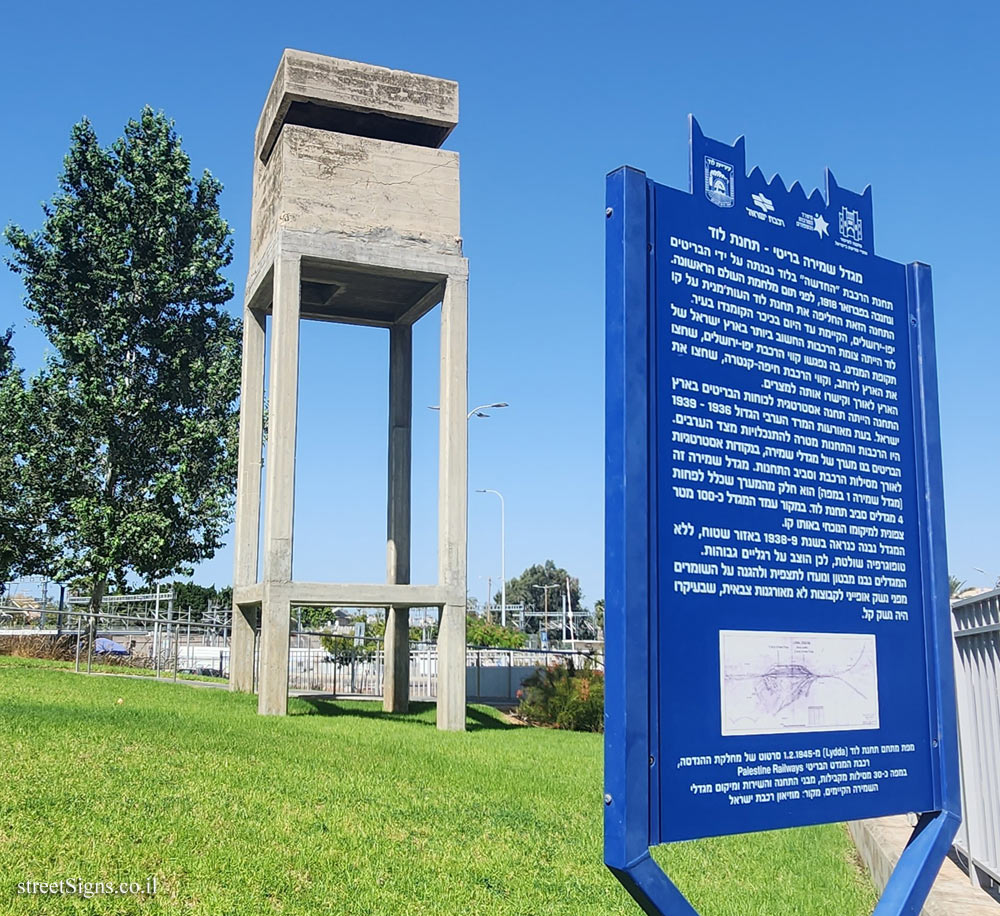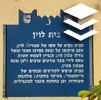The sign shape is rectangular but its head is designed according to the silhouette of the old building of the Gymnasia Herzliya, which serves as a logo of the Council for the Preservation of Heritage Sites in Israel
The watchtower was photographed on the same day by the same photographer
 Click for a larger image Translation of the text on the sign
Click for a larger image Translation of the text on the sign:
Symbol of the Council for the Preservation of Israeli Heritage Sites
The emblem of the Ministry of Culture and Sport
Israel Railways symbol
The symbol of the city of Lod
British Watchtower - Lod station The "new" railway station in Lod was built by the British and inaugurated in February 1918, before the end of the First World War.
This station replaced the Ottoman Lod station on the Jaffa-Jerusalem line, which still exists today in the city’s Commando Square.
Lod was the most important railway junction in Israel during the Mandate period. It was where the Jaffa-Jerusalem railway lines, which crossed the country horizontally, and the Haifa-Kantara railway lines, which crossed the country lengthwise and connected it to Egypt, met.
The station was a strategic station for the British forces in the Land of Israel. During the events of the Great Arab Revolt 1936 - 1939, the trains and stations were the target of harassment by the Arabs. The British built an array of guard towers, at strategic points along the railroad tracks and around the stations. This guard tower (guard tower 1 on the map) is part of the array that included at least 4 towers around the Lod station. Originally, the tower stood about 100 meters north of its current location on a line.
The tower was probably built in 1938-9 in a flat area, with no dominant topography, therefore it was placed on high legs.
The towers were built of concrete and were intended for observation and protection of the guards against weapons typical of unorganized military groups, which were mainly light weapons.
[Map]
Map of the Lydda station complex from February 1, 1945, a sketch of the engineering department, British Mandate Palestine Railway
The map shows about 30 parallel tracks, the station and service buildings and the location of the existing guard towers, source: Israel Railway Museum

 Click for a larger image
Click for a larger image  Click for all signs belonging to Heritage Sites in Israel
Click for all signs belonging to Heritage Sites in Israel
 1.06 Km |
1.06 Km |  1.06 Km |
1.06 Km |  4.36 Km |
4.36 Km |  4.44 Km |
4.44 Km |  4.45 Km
4.45 Km